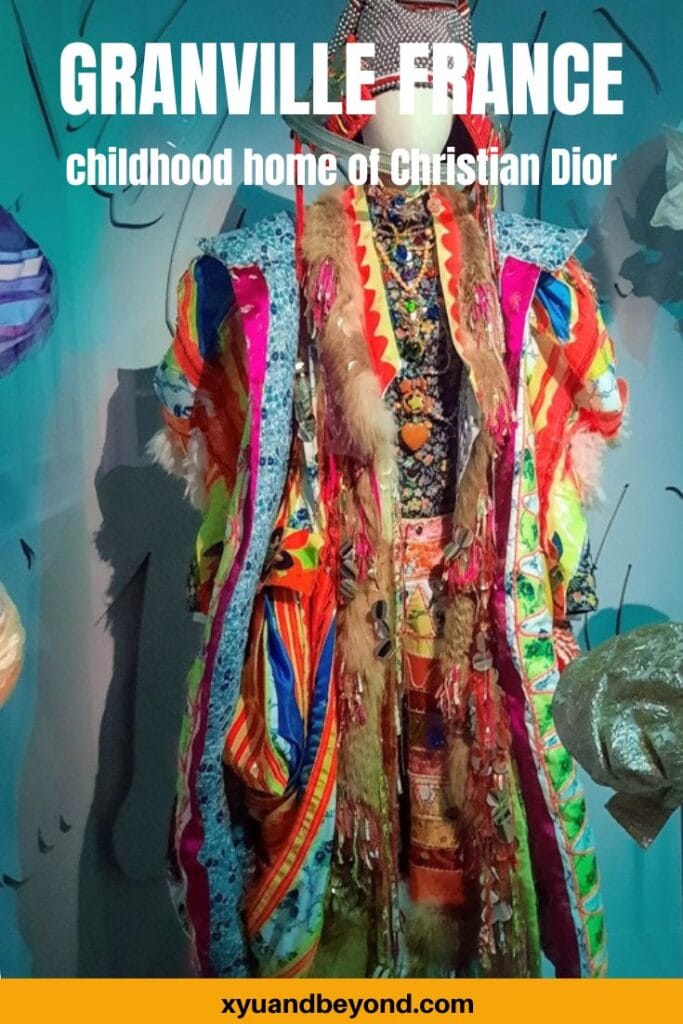Visiting Granville France –childhood home of Christian Dior
Granville France is one of those ancient harbour towns that deserve a visit when you are travelling through Normandy. The old town stands proud on a rocky promontory that juts into the harbour. The lower town is a centre for Yachties and tourists with a ferry service to the Channel Islands of Britain.
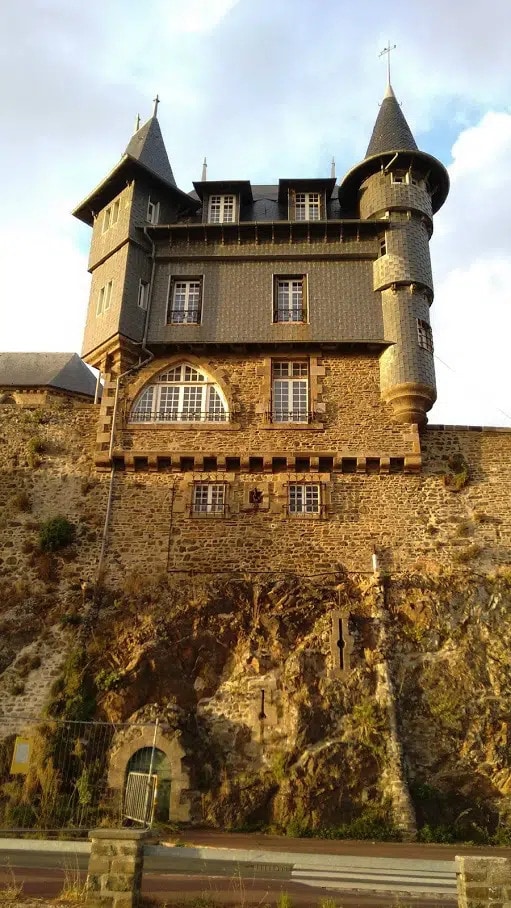
Where is Granville France?
Granville is a port town with an old walled upper town in the Manche department of Normandy in western France. It is located south of Cherbourg and west of Paris. It makes the perfect easy stop off on a road trip through Normandy and Brittany.
History of Granville France
Nicknamed the “Monaco of the North” (probably by the tourism office) Granville was a known harbour for pirates and after the pirates got rich and retired the wealthy of France came to Granville the seaside resort.
It was originally a Viking settlement but became part of the English territory from the 14th century to just before the Hundred Years War ended.
From 1450, ships from and around Granville fished for cod off Newfoundland. Through the centuries, Granville became an important cod port, like its Brittany neighbour Saint-Malo.
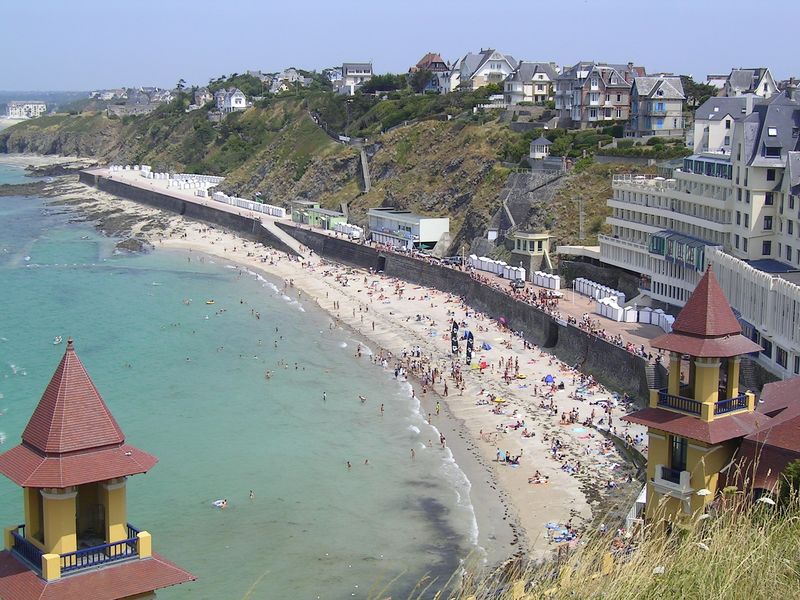
Under Louis XIV the Sun King, Granville, was a vibrant port swarming with sailors, pirates and buccaneers. Many of these pirates worked for the King and there were 15 Admirals including Pleville Le Pelley, the “Wooden Legged Corsair” sailing out of Granville.
Over the following centuries, the town grew wealthy as one of the most important port towns in Normandy, the period during which the historic centre of Granville was developed.
The importance of the port for the navy led to substantial fortifications being built around the old town during the 17th century. However, by the 19th-century fishing was declining and Saint-Malo had become a more important port.
Granville became a popular seaside resort in Normandy, at the end of the 19th Century after a Paris to Granville train line opened and allowed Parisians the opportunity to come to Granville to enjoy its beaches and thalassotherapy spas.
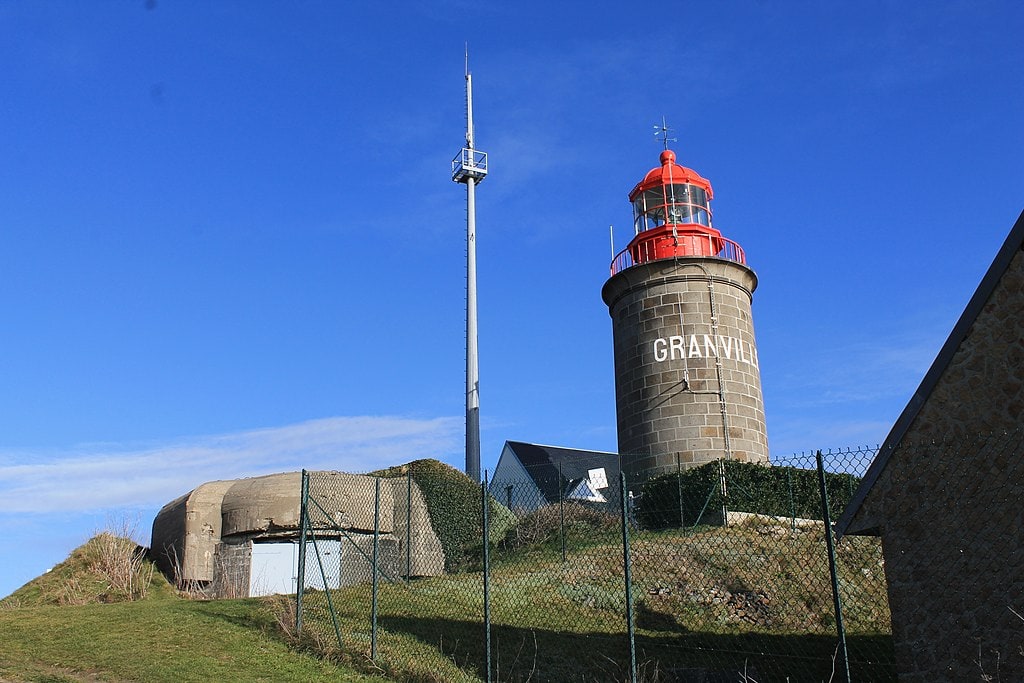
During WWII the Chausey Islands which belonged to Great Britain was invaded by German forces who occupied the Islands over the period of the war. During the war, Granville was the site of a prisoner of war camp.
In 1944 German paratroopers escaped from the camp and made their way to the German-occupied Channel Islands. They passed on to Command intelligence about several ships in the harbour and the location of US troops. A raiding force landed in Granville and brought back desperately needed supplies and former prisoners from the Granville Camp.
Things to do in Granville France
Granville Port
Sail the port on a restored Newfoundland cod-fishing boat, the Marité. Under restoration since 2006, the Marité opened its decks in 2009. The rig is a 3-mast schooner with 16 sails and crewed by 6 professional sailors and you can enjoy a sail around the bay and to the Chausey Islands on this beautiful ship.
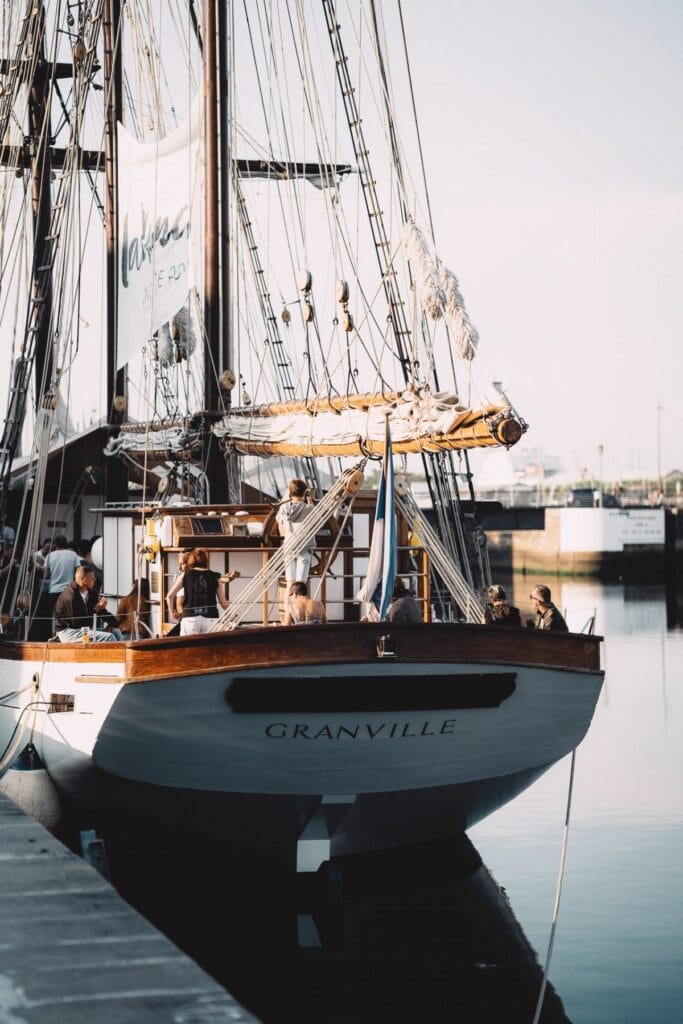
The Marité sails alongside other ships including the Charles-Marie, the Courrier des Isles and the Granvillaise. Built at the end of the First World War, bought from the shipyard, transformed and restored in 1921.
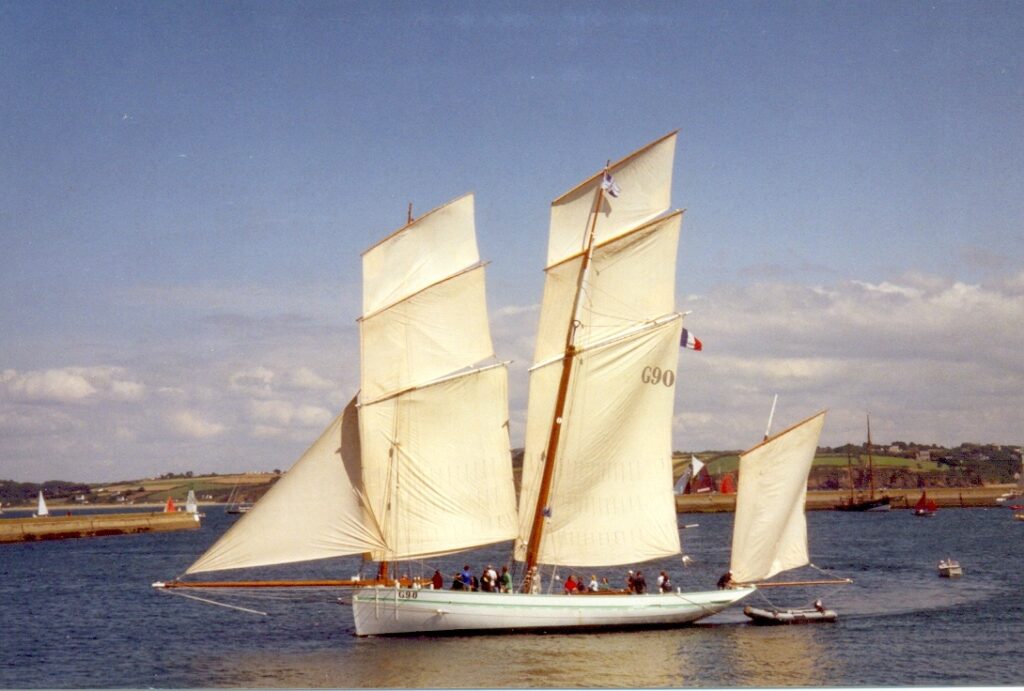
The Chausey Islands – what to see
The Chausey archipelago remains a hidden gem to tourists and this beautiful archipelago can be reached by ferry or private boat. There are 52 islets at high tide and low tide 365.
Only the main island – La Grande Ile is inhabited. It is a small island where you can find a few shops, a grocery store, a hotel and a few gites and fabulous beaches. There is a fabulous hotel on the Ile with a superb seafood restaurant you can visit. Chausey holds the distinction of being the only Channel Island that is a French territory.
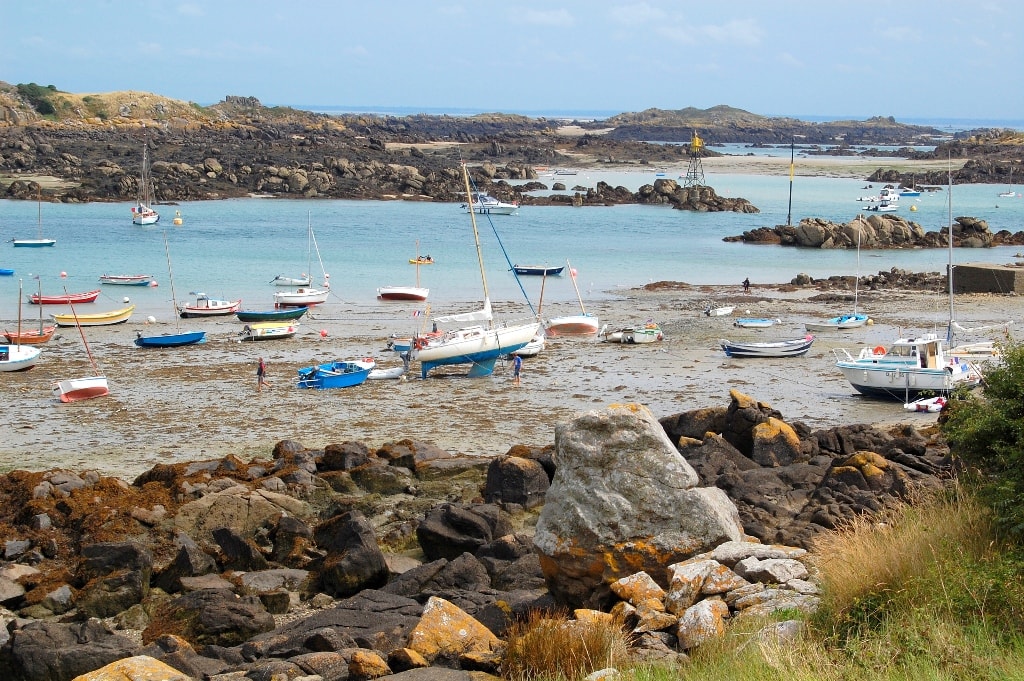
Chausey history
In 1559, the French built the Fortress of Matignon on Grand Île. A square fortlet with a round tower, this fort was built to proclaim the French command of Chausey. Matignon was enlarged in the 1740s, which the British Royal Navy destroyed in 1744. The French tried again, building another fort on the other side of Grand Île shortly thereafter…which the British also destroyed, in 1756.
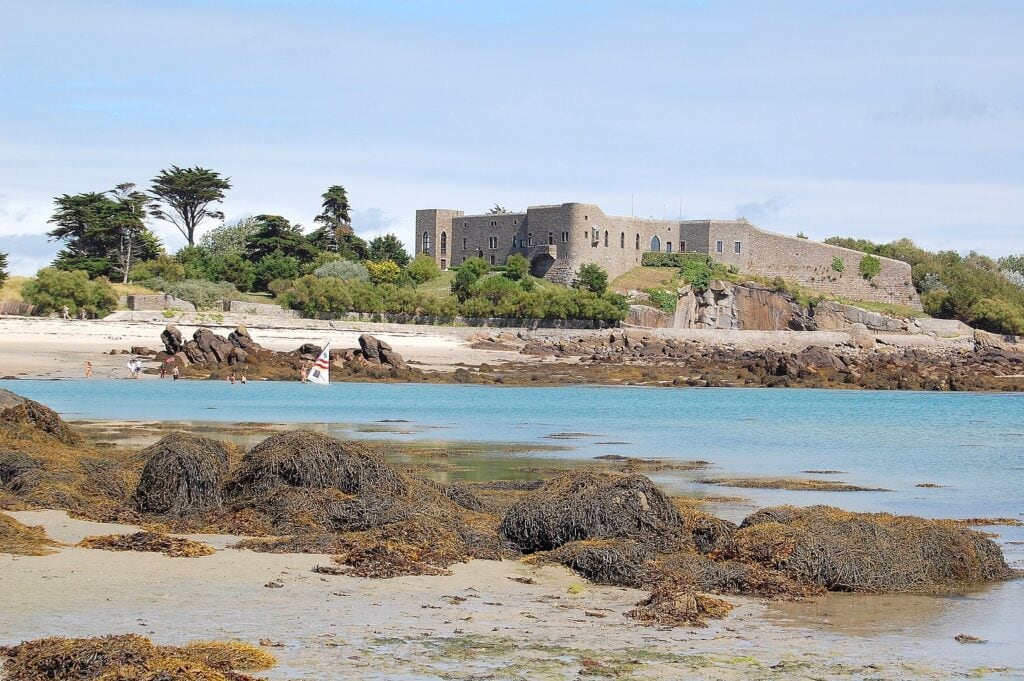
Chausey was ignored for years until Napoleon III ordered the construction of the star fort on the southern tip of Grand Íle in 1859. You can see the remains of this fort on the Island.
The Lighthouse
Has been in operation since 15th October 1847, and towers at 39 metres above the highest seas.
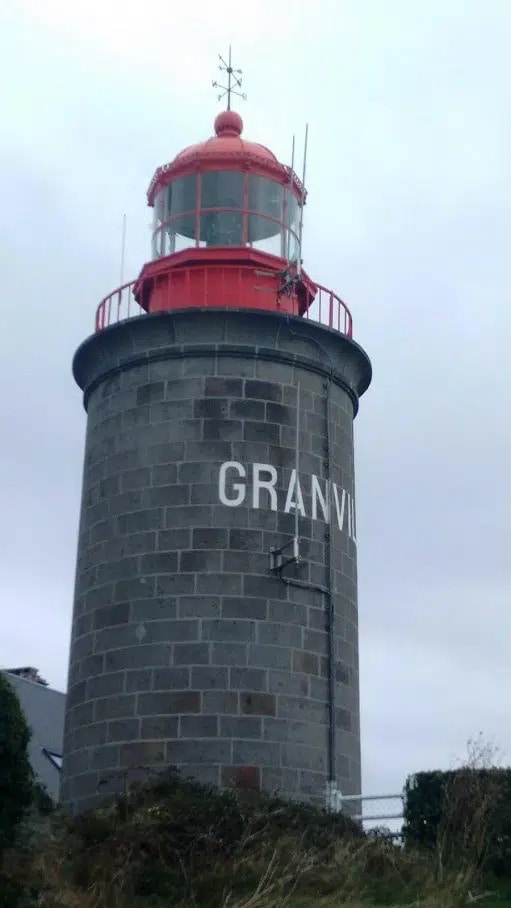
Towers of Baudry and Lambert
These are situated on the path to the lighthouse. They were built in the middle of the 19th Century, to put an end to a quarrel between the inhabitants of Granville and Cancale.
The chapel
Built around 1850, it houses stained-glass windows created by Yves Durand de Saint, a beautiful Louis XIV altar and two ship models.
The castle
Situated on the west coast of the island, the castle was built in 1559, and restored in 1923 by industrialist Louis Renault, who fell in love with Chausey.
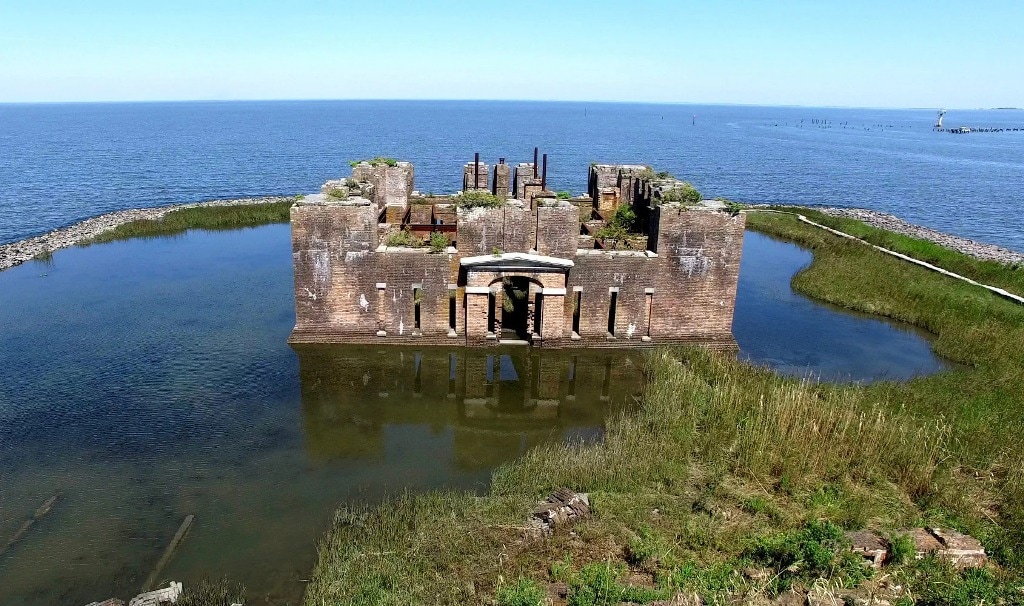
Chausey Beaches
Chausey boasts six white sandy beaches, three of which are dedicated to tourists and bathing.
The island is a protected nature reserve but it is possible to book guided walks at low tide to learn about the local flora and fauna. You can also see the remains of the quarry where the stone was taken to build Mont Saint-Michel. You will often see a pod of dolphins racing through the waters of the Bay.
Granville Old Town
Visitors to the town generally miss the Old Town which is built on the peninsula overlooking the port in the lower town. The upper town, is the historic heart of the city, and it retains a great architectural richness today: the ramparts, the church of Notre Dame, the Logis du Roi with its large gate and its drawbridge, a few houses and shops from the 16th and 17th centuries, 17th and 18th-century mansions, residences of wealthy Newfoundland ship owners and corsairs.
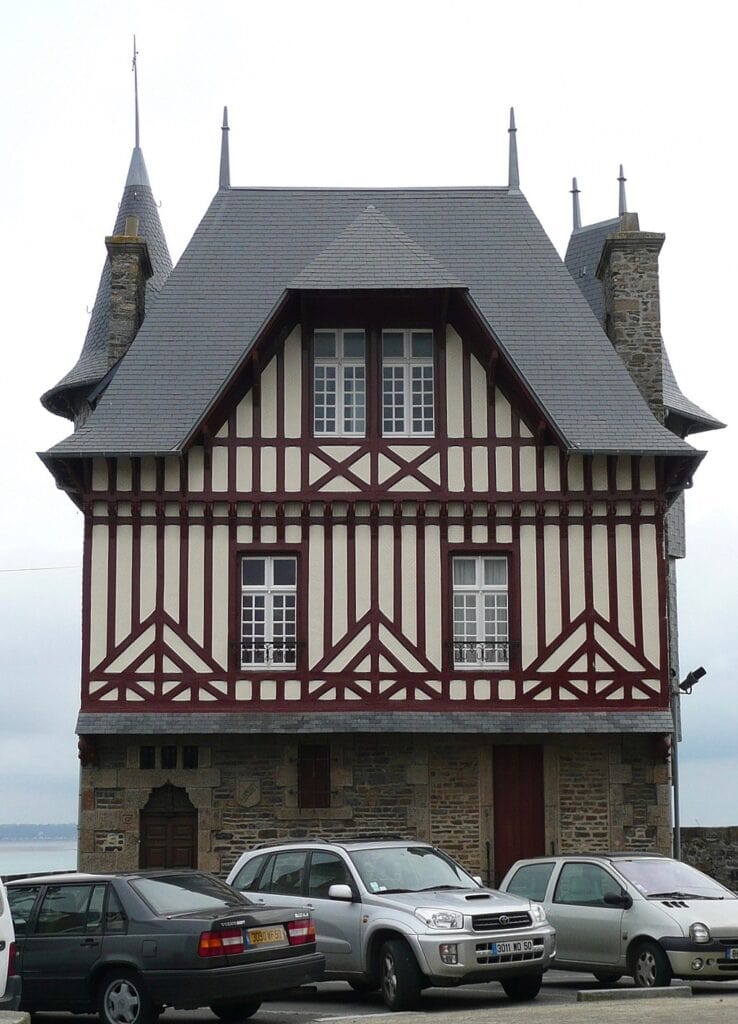
The old town is built on a peninsula and is divided into two parts. To the west is a flat area with amazing views across the bay and along the coast. The eastern part of Old Town Granville is fortified and there are 180 steps up to it from the port if you like a challenging walk.
English settlers arrived in Granville around 1439 and began the work of building the ramparts to fortify the town. The granite used came from the Chausey Islands and was also used to build the Church.
The Drawbridge
This was originally the only entrance into the old town. It’s called La Grand’Porte and the drawbridge was built between 1580 – 1640.
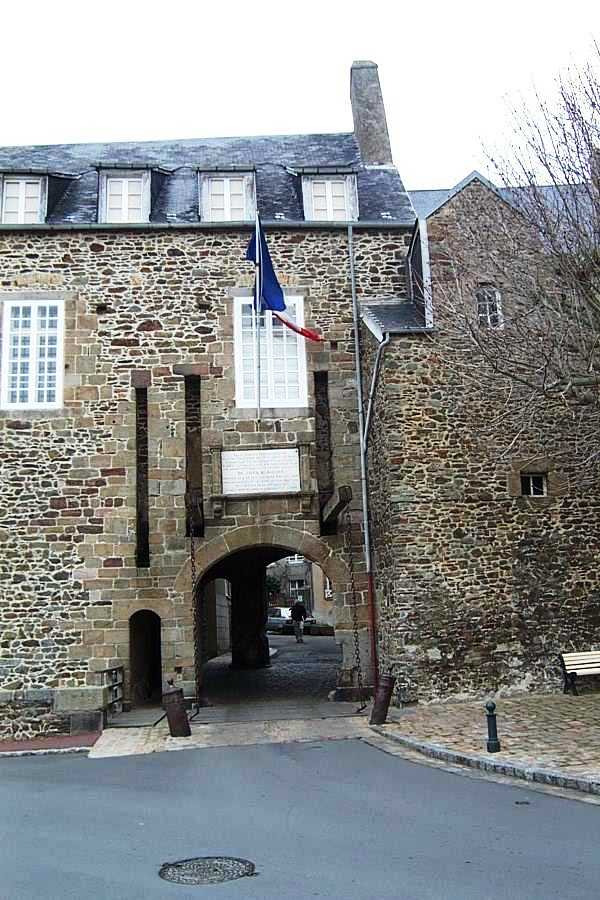
The King’s Lodge
In the 15th century, there was a gate in the ramparts at this location, called Porte de l’Œuvre which was the only access to the upper town. In 1630, this part of the ramparts was remodelled. The Logis du Roi built above served as the residence of the commander of the city.
Today it contains the Museum of Art and History and it contains 3 themed collections: the maritime history of Granville with fishing in Newfoundland and the corsairs, Normandy in the 19th century with costumes, headdresses, jewellery, utensils and furniture and the third, sea bathing from the 19th century to the 1950s.

The Church
The Eglise Notre Dame du Cap Lihou was begun in 1439 by the English in a Roman style although later building work was gothic. The church wasn’t completed until 1771 and the church survived the bombings of WWII. The first chapel built on this site was constructed according to a legend that the sailors of the area found a statue of the Virgin Mary in their nets in 1113.
Listed as a historical monument inside the church you will find a 15th-century statue of the Virgin in Caen stone, the chapel of Saint Clément, the patron saint of sailors-fishermen, and huge organs dating from the years 1660-1662.
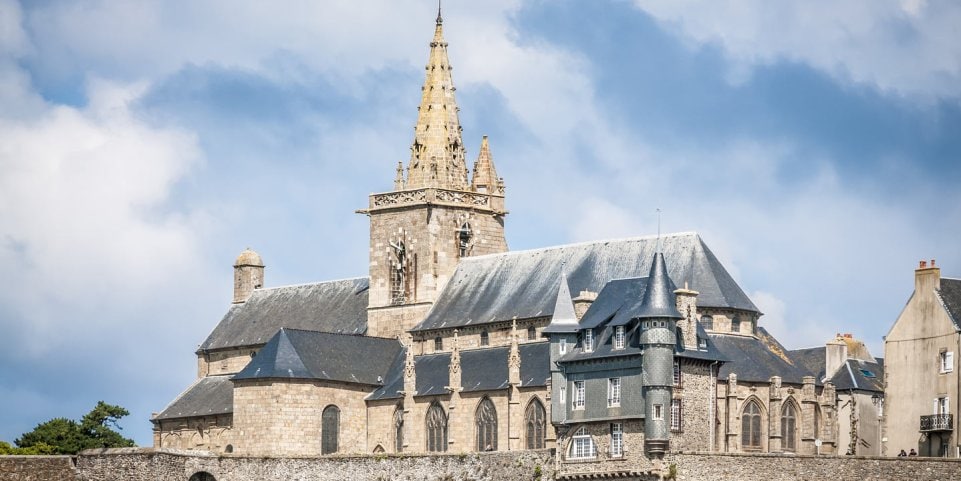
Place Cambernon
This is the town square where you will find restaurants, cafes and a number of artists’ workshops. The two streets that run parallel to each other and off the square are Rue Notre Dame and Rue Saint-Jean.
Many of the buildings you see on these two streets date from the 17th to 18th centuries. On Rue Notre Dame you can see the Hotel le Mengnonnet. This mansion was built in the 18th century and 1830 and was home to a privateer and shipowner captain. Also on rue Notre Dame is the theatre that was built in 1828.
Place de l’Isthme
The eastern part of the fortified town is home to the Richard Anacréon Museum of Modern Art. You can visit their website for opening times and details of the hosted exhibitions.
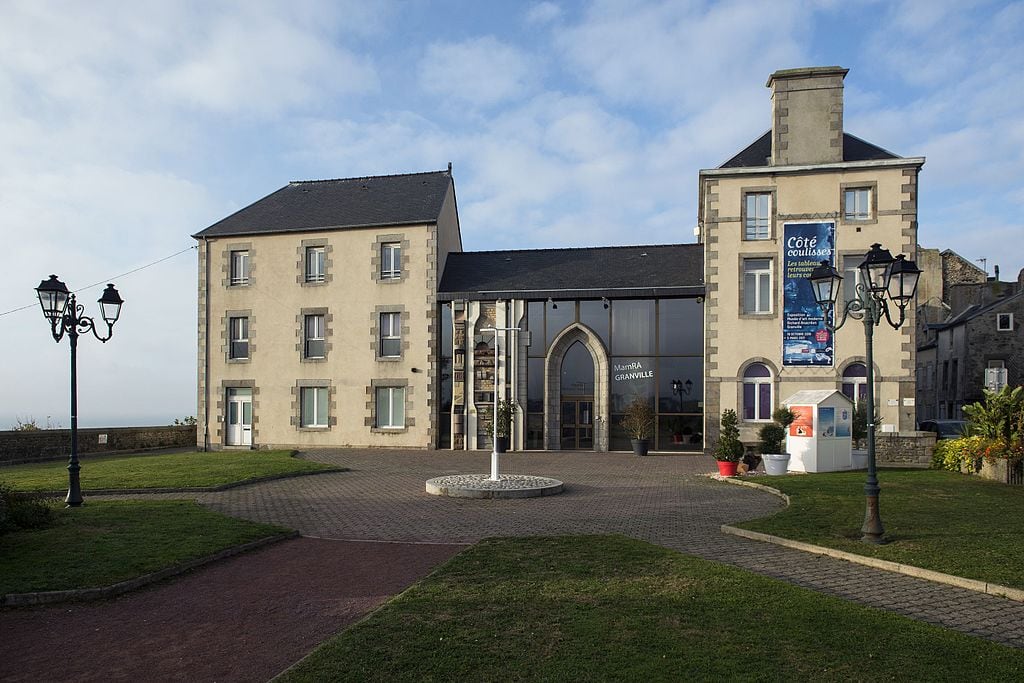
La Maison du Guet (Lookout or Watchtower House)
Next to the church is a house built into the fortified walls. It is an unusual building as it looks totally different depending on where you stand. From the church, you can see all three levels and there are two towers a circular one and a square one.

Zurich-Bazeilles Barracks
Within the rampart walls lies the Zurich-Bazeilles barracks. The barracks were built between 1752 and 1760. These days the barracks are a hostel and sometimes host art and photography exhibitions which are free to visit.
Pointe du Roc
Le Roc is the name given to Granville’s dramatic headland. Walk around it not just for fantastic sea views across the Bay of the Mont Saint-Michel but you can’t see Mont St. Michel from here. Below the headland, spreads the beach resort where you will find a tidal sea-water swimming pool.
The Pointe du Roc boasts prime views of the sea and the port of Granville, so you easily understand why the Germans chose this site to build their battery.
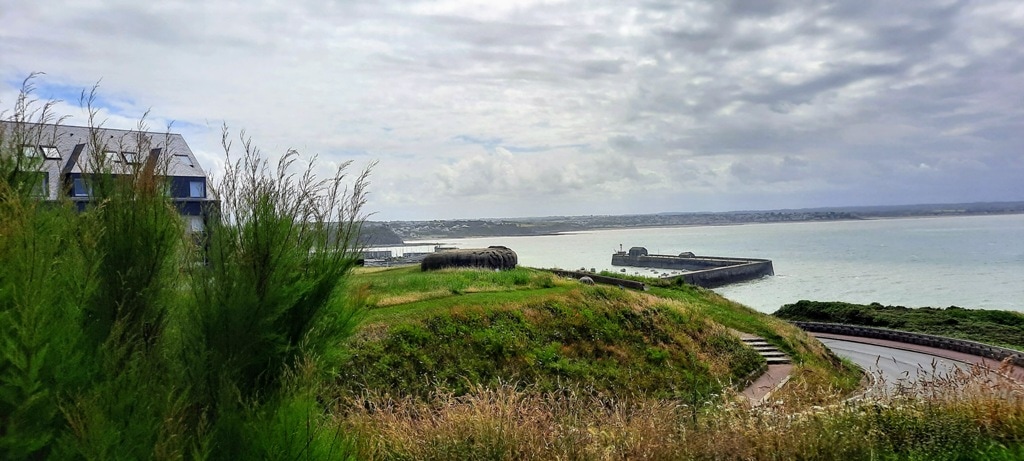
Chemin des Douaniers
This walking path is the Customs trail which was used back in the day by smugglers trying to evade the customs men. The trail goes down to the beach and around the promontory.
As you look down towards the port, you can see the bronze statue of Georges-René Péville Le Pelley. Le Pelley was a pirate who became Governor of the Port of Marseille, Admiral, Minister of Marine and Colonies and finally Senator.
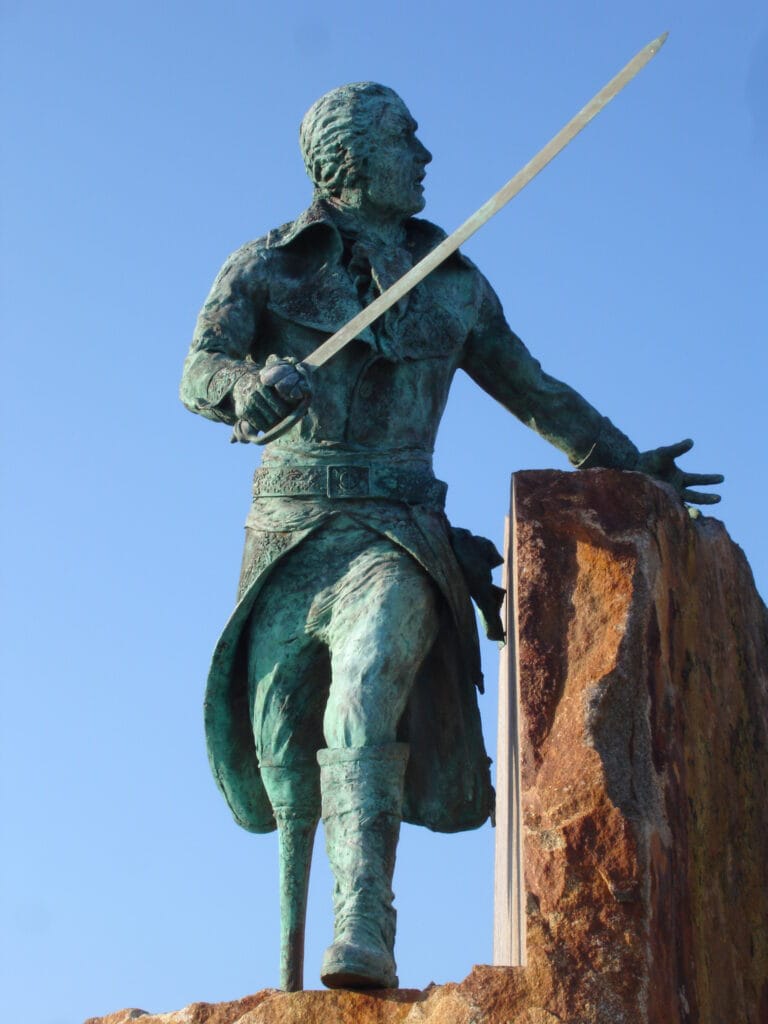
La Batterie du Roc
La Batterie du Roc is on the tip of a promontory known as Pointe du Roc in Granville’s old town (Haute-Ville) and you can either walk up the slight hill from the Port or drive up to the Roc as there is a small car park there.
The Germans came to Granville at the end of June 1940 and built the defensive systems you can see the remains of. They put in place this extensive defence system during WWII to prevent an Allied invasion from the UK after the USA joined the conflict.

The battery stretched on each side of the lighthouse and commanded both the bay and the sea. It also defended the port of Granville, a highly strategic point that allowed them to be supplied by sea but also blocked any Allied intrusion.
The Germans built 19 buildings, including shelters and bunkers, a small watchtower and a command post converted after the war to house a semaphore.
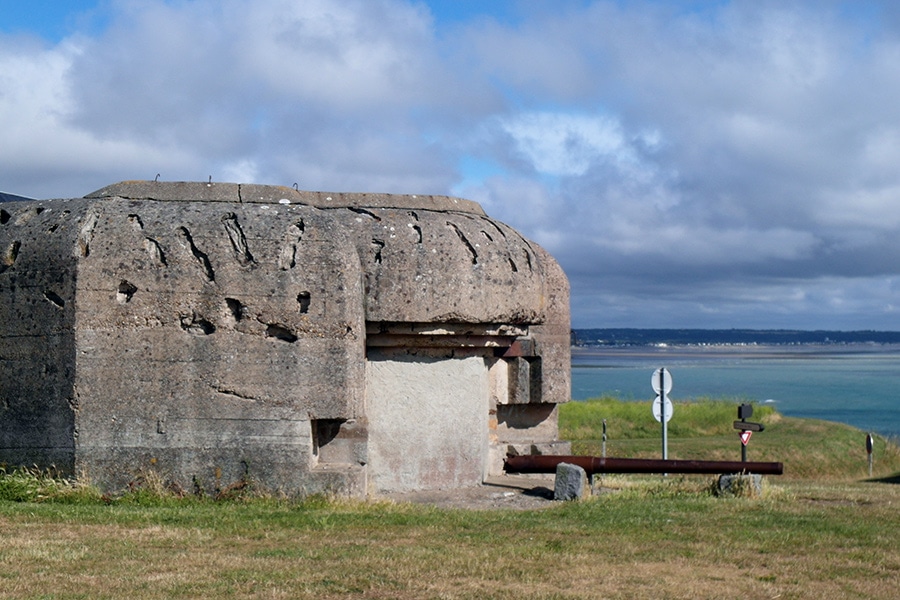
La Batterie du Roc has remained in its current state since its Liberation and was listed Historical Monument in 1994. The access is free and you can walk among the bunkers, and de-commissioned cannons and see a memorial to the members of the French Resistance.
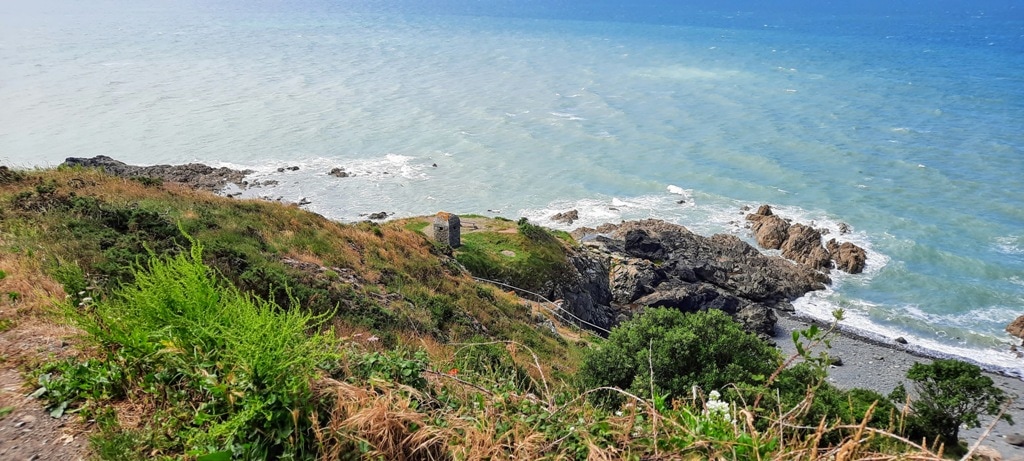
Christian Dior house Granville
On the clifftop above you can just make out the pink villa where the 20th-century’s most famous fashion designer, Christian Dior, lived as a child and now houses a wonderful museum.
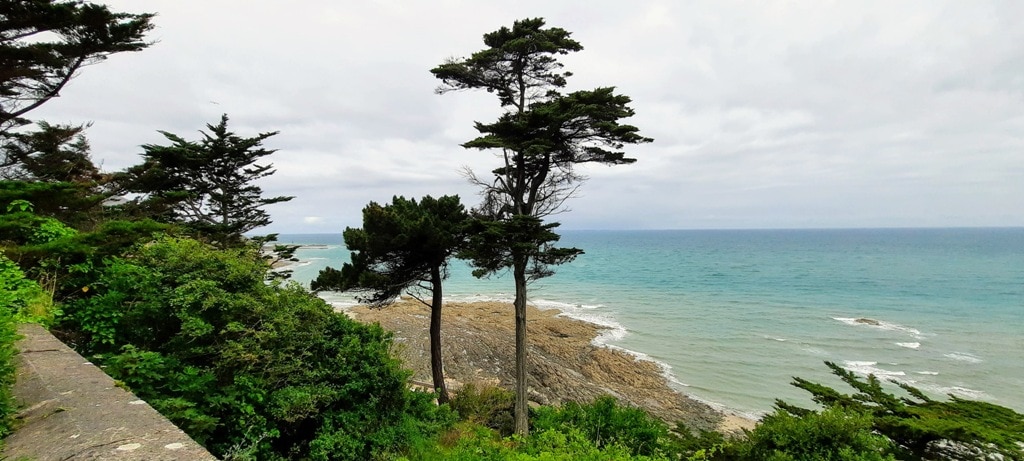
Dior’s love of fashion was partly inspired by the Granville Carnival, for which, as a boy, he would make lavish costumes for himself and his friends.
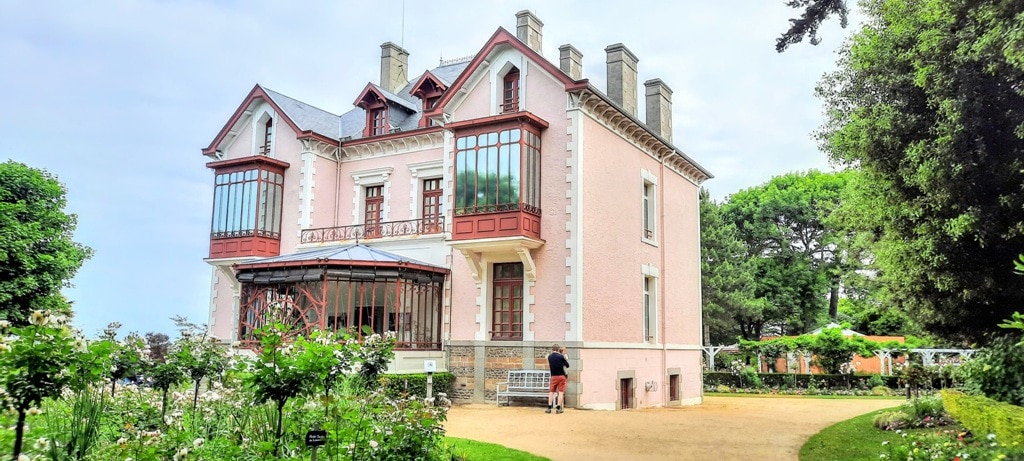
The gardens surrounding the house are free to wander and are full of the scented roses that Dior’s mother loved.
The views from the gardens are simply beautiful and the gardens are planted with gloriously coloured roses and other annuals.
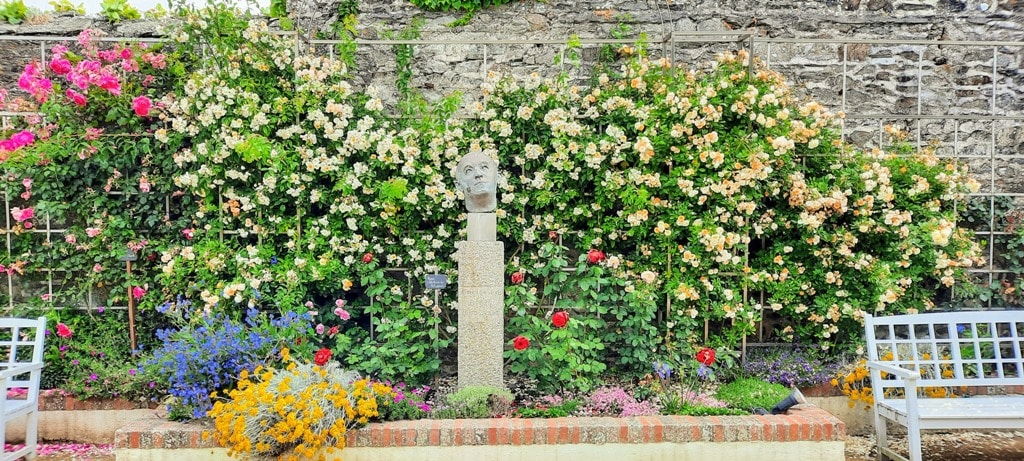
The house itself is not huge but it contains two floors and a small gift shop hosting exhibits annually that focus on the House of Dior and its various collections.
I never dreamt that someday I would see an original Dior but at the time of my visit, the Museum was holding an exhibit of Dior hats and the outfits that the hats were designed for.
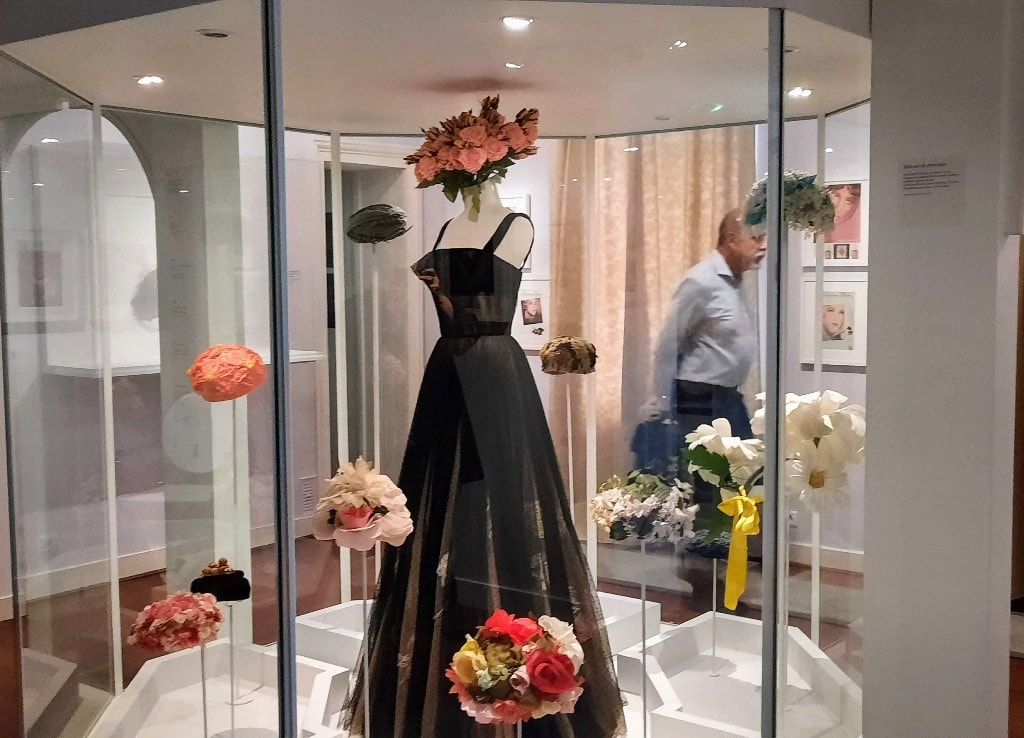
This particular exhibition is designed to take you on a journey of the history of Dior Hats from 1947 to 2020. There are 200 hats, plus complete outfits with headwear displayed.
Along with original drawings, photographs and working documents.
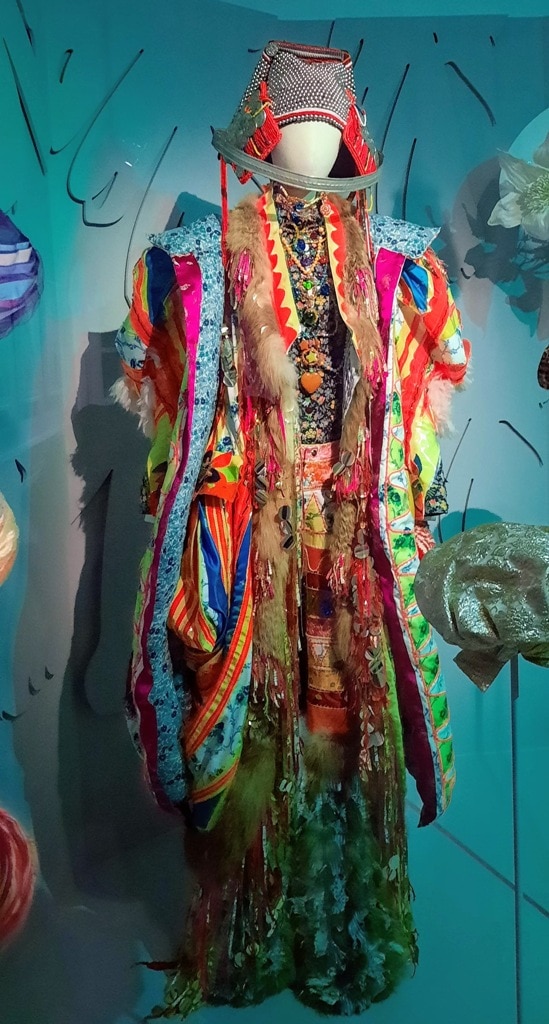
The Dior workshops are the only Haute Couture fashion house to have a hat workshop that is still active up to this day. There is a lovely tea house just behind the pink Villa where you can enjoy breakfast or a light lunch.
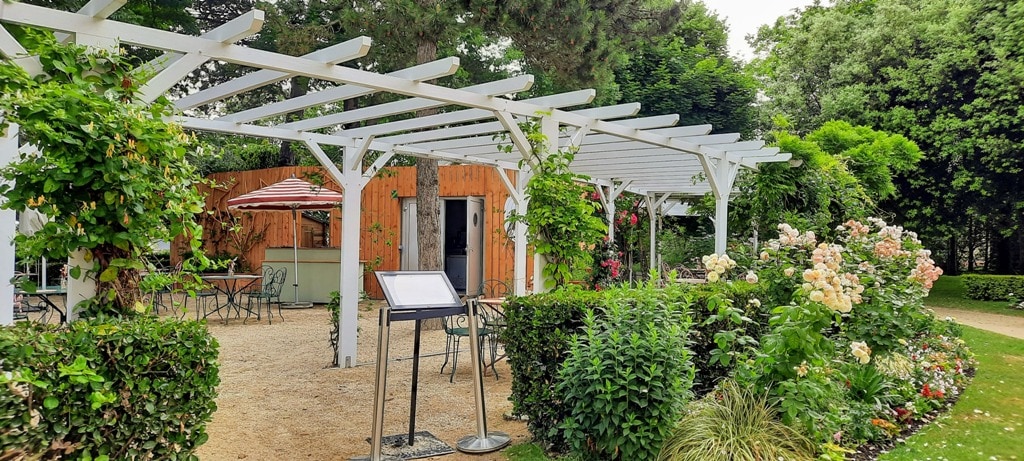
Granville Carnival
During the four days leading up to Shrove Tuesday (Mardi Gras), Granville hosts an epic party known as the Carnaval de Granville. The celebration is so was recognised by UNESCO for its Intangible Cultural Heritage.

History of the Carnaval de Granville
The Granville Carnival goes the town’s maritime heritage. Each year around Mardi Gras, the local fisherman would leave for the Grand Banks of Newfoundland to fish for cod. The party that was held in their honour soon turned into a Carnival.
The first officially organised Carnaval de Granville took place on February 7, 1875. The festival attracts over 100,000 spectators each year who come to join the party.
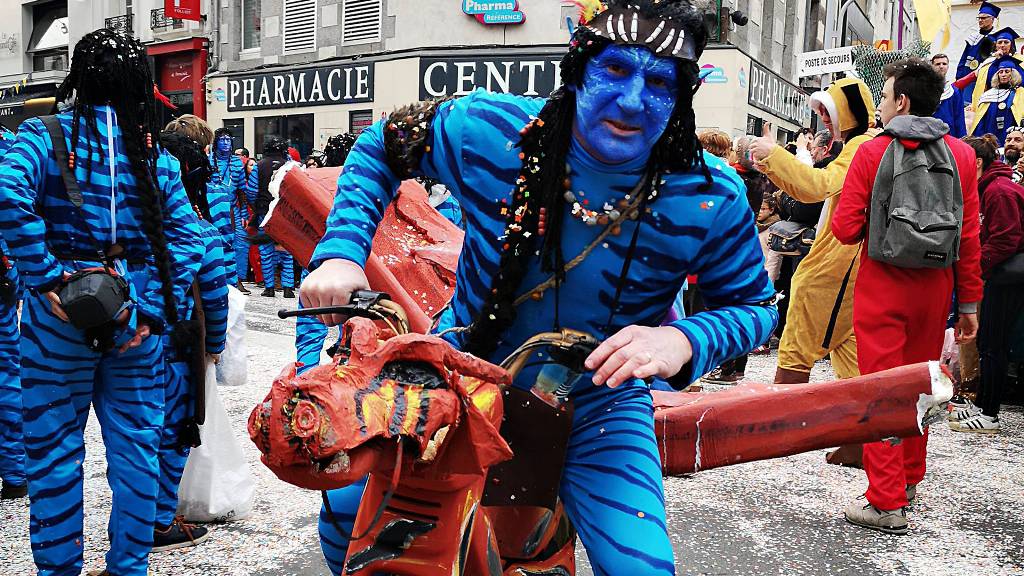
There is a parade on the Sunday with lavishly decorated floats and everyone in costume, a Children’s parade led by the Carnival King and at the end of the Carnival, there is a ball where the carnavaliers can celebrate the event.
Take the time to visit Granville France and enjoy a relaxing day on the beaches or in the old town.
You might also like
Food in Brittany: Fall in love with the food of Bretagne
Château de Josselin – A millennium of history in Brittany
The beaches of Normandy – lest we forget
Cancale the charming oyster capital of France
Visiting the Captivating Monet’s Garden at Giverny
14 Fabulous French Castles to visit
Pin it to save it
